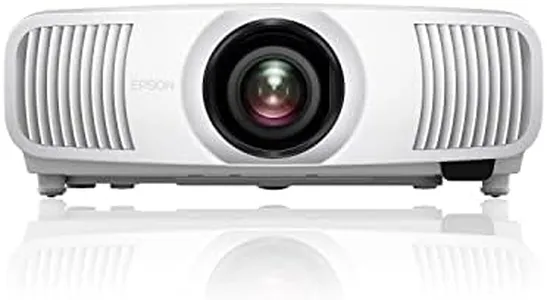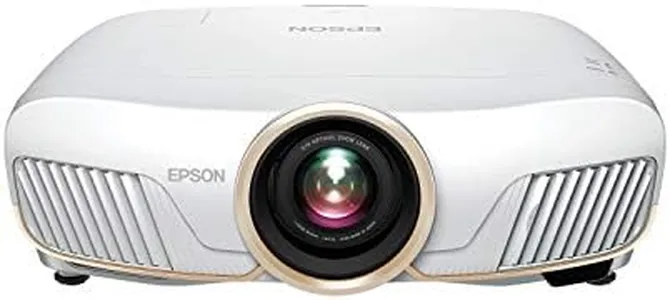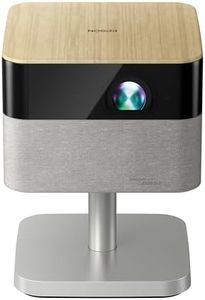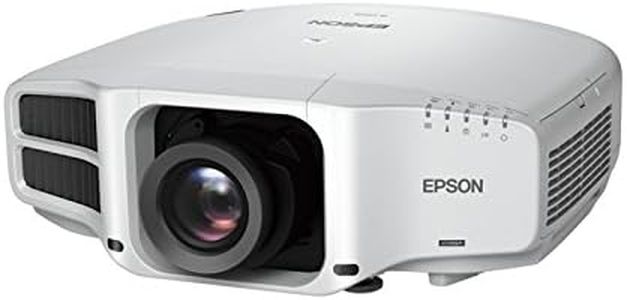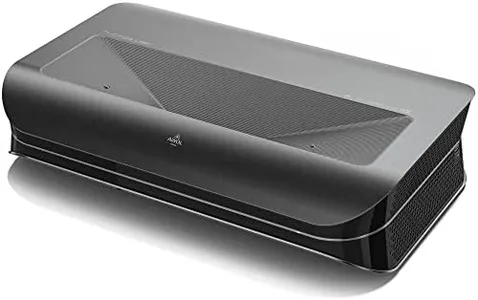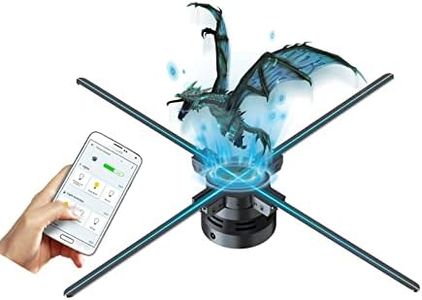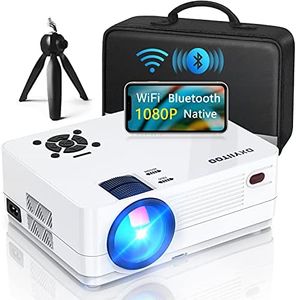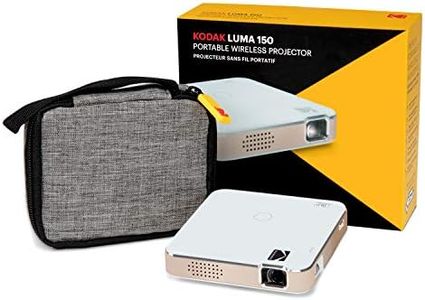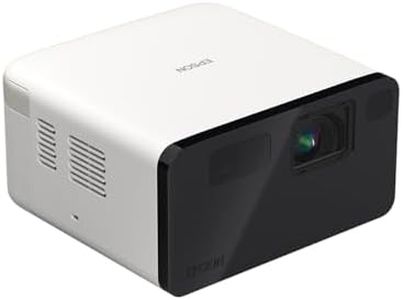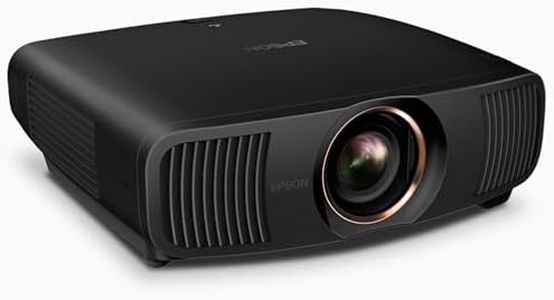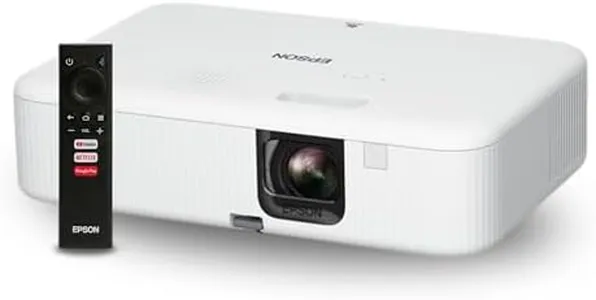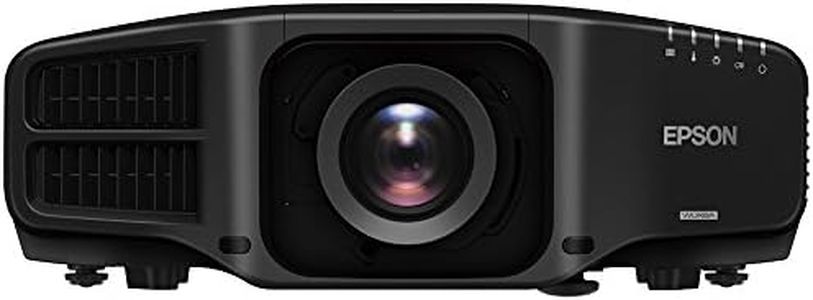10 Best Epson Projectors 2025 in the United States
Our technology thoroughly searches through the online shopping world, reviewing hundreds of sites. We then process and analyze this information, updating in real-time to bring you the latest top-rated products. This way, you always get the best and most current options available.

Our Top Picks
Winner
Epson Home Cinema LS11000 4K PRO-UHD Laser Projector, HDR, HDR10+, 2,500 Lumens Color & White Brightness, HDMI 2.1, Motorized Lens, Lens Shift, Focus, Zoom, 3840 x 2160, 120 Hz, Home Theater, Gaming
Most important from
113 reviews
The Epson Home Cinema LS11000 4K PRO-UHD Laser Projector is a high-performing option for home theater and gaming enthusiasts. It boasts a 4K PRO-UHD resolution of 3840 x 2160, providing sharp and clear images thanks to the advanced pixel-shifting technology and Precision Shift Glass Plate. With a brightness of 2,500 lumens for both color and white light, it can deliver impressive visuals even in rooms with some ambient light. The dynamic contrast ratio exceeding 1,200,000:1 ensures deep blacks and vibrant colors, enhancing the viewing experience.
The laser array light source contributes to its long lamp life and maintains consistent brightness and color accuracy over time. Additionally, the projector supports HDR, HDR10+, and HLG content, along with real-time HDR curve adjustment for fine-tuning the visuals. Its 120 Hz refresh rate is ideal for smoother motion in supported content and gaming, making it a versatile option for various uses. The motorized lens with lens shift, focus, and zoom features add convenience and flexibility in setup.
It also offers multiple connectivity options, including USB, Ethernet, and HDMI 2.1, ensuring compatibility with a range of devices. However, the projector's 28-pound weight and larger dimensions (17.6 x 20.5 x 7.6 inches) might make it less portable and more challenging to mount or move around frequently. Additionally, while it includes keystone correction, achieving a perfectly rectangular image might require careful setup. This projector is best suited for users who prioritize high-quality visuals and versatility in a home theater or gaming environment.
Most important from
113 reviews
Epson Home Cinema 5050UB 4K PRO-UHD 3-Chip Projector with HDR,White
Most important from
403 reviews
The Epson Home Cinema 5050UB is a high-end 4K PRO-UHD projector designed to deliver an exceptional home theater experience. It utilizes advanced 3LCD technology to ensure vibrant colors and high brightness levels, with 2,600 lumens for both color and white brightness. This means you can enjoy vivid and bright images even in well-lit rooms. The projector also features a 4K resolution of 4096 x 2160, ensuring incredibly sharp and detailed visuals.
Its outstanding dynamic contrast ratio of 1,000,000:1 thanks to Epson's UltraBlack Technology ensures deep blacks and excellent shadow details, which is perfect for movie enthusiasts. Additionally, the HDR processor supports full 10-bit color processing, making HDR content look more lifelike with smooth transitions and minimal compression artifacts. The wide color gamut covers the DCI-P3 color space, providing professional-level color accuracy and richness, which is a significant advantage for serious home theater setups.
Connectivity options include HDMI, making it easy to connect to various devices. One of the standout features is the precision lens technology, which ensures clear and focused images across the entire screen. The Epson Home Cinema 5050UB is ideal for users looking for a top-tier home cinema projector with excellent color accuracy, brightness, and 4K resolution.
Most important from
403 reviews
Epson Lifestudio Flex Plus 4K PRO-UHD Portable Lifestyle Projector, 1,000 Lumens of Color and White Brightness, Sound by Bose, Google TV, 3-Chip 3LCD Triple Core Engine, Epson Projection Studio App
Most important from
27 reviews
The Epson Lifestudio Flex Plus 4K PRO-UHD is a compact, portable projector that delivers sharp and clear 4K resolution, making it a great choice for home cinema lovers who want a big, bright image up to 150 inches. It offers 1,000 lumens of brightness for both color and white light, which is solid for dimmer rooms but might struggle a bit in very bright spaces. The built-in Bose speakers provide impressive sound quality for a projector this size, so you don’t immediately need extra speakers.
It also features smart connectivity with Google TV, letting you easily stream popular apps like Netflix and YouTube without extra devices. With auto-focus and auto screen alignment, setup is quick and simple, especially helpful if you move it around. Connectivity options include HDMI, USB, Wi-Fi, Bluetooth, and a headphone jack, so you can connect a variety of devices.
Weighing just under 9 pounds and being fairly small, it’s easy to carry for lifestyle use beyond just a fixed home theater. This projector suits casual gaming and watching movies at home, though if you require very high brightness for bright environments or detailed specs on lamp durability, additional research may be beneficial.
Most important from
27 reviews
Buying Guide for the Best Epson Projectors
Choosing the right projector can significantly enhance your viewing experience, whether it's for home entertainment, business presentations, or educational purposes. When selecting an Epson projector, it's important to consider several key specifications that will determine the quality and suitability of the projector for your needs. Understanding these specs will help you make an informed decision and ensure you get the best fit for your requirements.FAQ
Most Popular Categories Right Now
